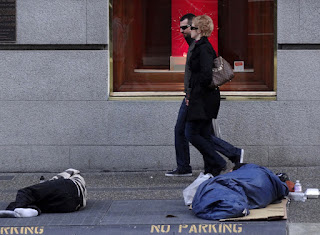Sept. 25, 2016: 26th Sunday Ordinary C
Mother Teresa had a favorite saying, “If we have eyes to see, we would see Jesus in disguise.” All of us have to admit that on occasion, we are blind in recognizing Jesus hidden in a person. On one occasion, a young mother brought her 11 yr. old son to see Mother Teresa. The boy wanted to see her because he believed that she would tell him the truth about his appearance. The young boy was terribly disfigured from an explosion when he lit a stick of dynamite thinking it was a firecracker. His face was badly scarred and his arms ended in stumps. Mother Teresa sat next to the boy and took his poor stumps in her hands, holding them while he talked to her. Mother first traced a finger over the disfiguring scars on his face, telling him that in her opinion they made him look manly and strong and gave him a courageous look. Then, as the boy asked if his stumps were terrible looking, she took each in her hands, stroked the places where the scars were the heaviest, kissed each stump, and told him they didn’t look a bit ugly, but were simply good strong-looking arms that had no hand. He then told her about his plans for the future, of one day being a counselor and using his own experiences to help others to overcome handicaps. Those who were near by seeing their interaction, were in tears. Perhaps Mother Teresa was revealing how God sees what we consider to be disfigurement or imperfection. Could you picture yourself sitting next to Mother Teresa? Could you imagine how Mother Teresa would trace her finger on what you consider to be an imperfection or a deep wound in you?
Aside from our inability to see God’s perfection in human imperfection and disability, another kind of blindness is indifference to human suffering. Today’s gospel reveals that well. In the parable, Jesus contrasts the life of a rich man and the poor man, Lazarus, who lives in the shadow of the rich man and his wealth. The rich man never ordered Lazarus removed from his gate. He did not kick him in passing nor was deliberately cruel to him. The great sin of the rich man was that HE NEVER EVEN NOTICED HIM. He thought it perfectly natural that the beggar be accepted as part of the landscape. He also thought it acceptable that Lazarus should lie in pain and hunger while he wallowed in luxury.
Christ united us in relationship to God and to one another through his suffering on the cross. The two relationships are intimately bound to one another. Thus, our response to God is shown in our love and service to our neighbors. To love our neighbor implies that we recognize and reverence his dignity and rights. In our material rich country, the loss of dignity and rights happens in persons who are lonely, unloved, and ignored.
As we look about in our own community, is there a landscape of suffering people or condition that we have come to accept with indifference or irrelevance? Mother Teresa used to say, “People are hungry for God. People are hungry for love...Do you have eyes to see? Quite often we look but we don't see. We are all passing through this world. We need to open our eyes and see.” Perhaps the greatest evil is the lack of love and charity, the indifference toward the neighbor who lives right around us. We may say to ourselves that the suffering or the need we see right around the corner is a systemic problem--generational poverty, racism--that we cannot solve on our own. Mother Teresa’s response to pain and need was to do little things, with great love. She invites us to not to be overwhelmed by numbers but to focus only on one neighbor that we can personally touch. Perhaps it can be something small such as helping someone learn to read, write a resume, or how to make a personal budget. We are not called to help masses, but to have common decency and respect for one person. When was the last time that you let someone ahead of the line? When was the last time you gazed upon someone with compassion and a smile. -Fr. Paul Yi



